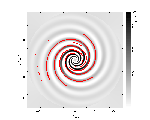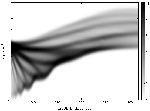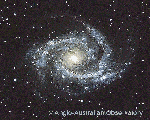A new arm for our Galaxy?
17 December 2003
Observations made with CSIRO's Parkes radio telescope and Australia Telescope Compact Array strongly suggest that our Galaxy has an extra 'spiral arm', not previously known.
Astronomers think that our Galaxy looks like many of the others that we see in the Universe: a central ball-shaped 'bulge' of stars, with 'arms' of gas, dust and stars sweeping out from the bulge.
The arms are where young stars are formed. Our solar system probably lies in a spur off one of the arms, about two-thirds of the way out from the centre of the Galaxy.
The arms are also full of hydrogen gas - the raw material for forming stars. Radio telescopes can detect a strong radio signal from this gas.
The astronomers found the new arm by determining the position of an unusual concentration of gas.
"The arm has been detected only from its hydrogen. It's unlikely that we'd be able to spot it from just looking at stars," explained CSIRO astronomer Dr Naomi McClure-Griffiths, who has led the research team.
Mapping our Galaxy is an extremely difficult job, because we are looking at it from the inside. Astronomers have been tackling the task since the 1940s. But they are still unclear how many arms the Galaxy has, said Dr McClure-Griffiths.
The new arm has been discovered as part of a research project, started in 1998, to map hydrogen gas throughout our Galaxy.
The arm is "huge", Dr McClure-Griffiths said - about 6500 light-years thick. It may well join up with another arm that is known to spiral out of the Galaxy's centre, she said.
Dr McClure-Griffiths' collaborators on the project were Professor John Dickey (University of Minnesota), Associate Professor Bryan Gaensler (Harvard University) and Dr Anne Green (University of Sydney).
A paper on the discovery of the new arm has been submitted to Astrophysical Journal Letters.
Images
(Click on the image for a larger version)




